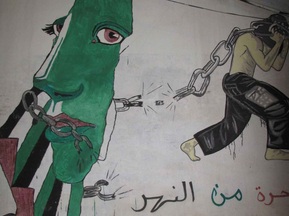 In Lebanon, there are currently 12 Palestinian camps hosting over 50% of the almost half a million refugees: four in and near Beirut (Burj al-Barajne, Shatila, Dbayeh, and Mar Elias), two in Tripoli (Beddawi and Nahr al-Bared), three near Tyre (Burj Shemali, El-Bass and Rashidiyeh), two near Saida (Ein el-Helwe and Mieh Mieh) and one near Baalbek (Wavel). The camps, especially in Beirut and the south of Lebanon, suffered immensely during the Lebanese Civil War and from the conflict with Israel. Three camps (two in Beirut and one in Nabatiyeh) were destroyed, and a fourth camp (Gouraud, Baalbek) was evacuated.
In Lebanon, there are currently 12 Palestinian camps hosting over 50% of the almost half a million refugees: four in and near Beirut (Burj al-Barajne, Shatila, Dbayeh, and Mar Elias), two in Tripoli (Beddawi and Nahr al-Bared), three near Tyre (Burj Shemali, El-Bass and Rashidiyeh), two near Saida (Ein el-Helwe and Mieh Mieh) and one near Baalbek (Wavel). The camps, especially in Beirut and the south of Lebanon, suffered immensely during the Lebanese Civil War and from the conflict with Israel. Three camps (two in Beirut and one in Nabatiyeh) were destroyed, and a fourth camp (Gouraud, Baalbek) was evacuated.
All camps in Lebanon continue to face serious problems, such as poverty, overcrowding, unemployment, poor housing conditions and shortage of proper infrastructure. Given that in July 1991 the government lifted working restrictions on Palestinians living in Lebanon, most of the camps are trying to find a way to be self-sufficient, opening their own shops, mechanic garages, bars and small eateries.
In 2007, as a result of the three-month conflict between the Lebanese Army and Fatah Al-Islam, approximately 27,000 Palestine refugees were displaced from the Nahr el-Bared camp in Tripoli. Following shootings and aerial bombardments, an estimated 95% of its buildings and infrastructure were destroyed. The first stages of reconstruction are underway in order to allow displaced refugees to return to their homes.
If you are interested in visiting the camps, take any invite (exercise due caution) or contact UNRWA, the public Information Office of the UN (www.unrwa.org, +961 (0)1 840 461).

